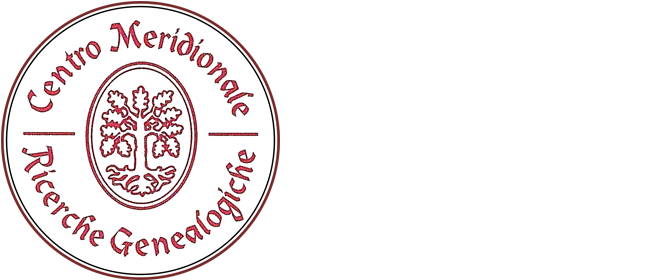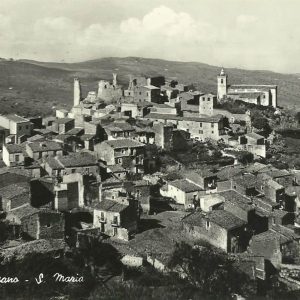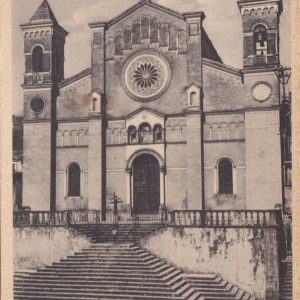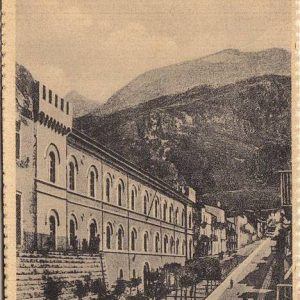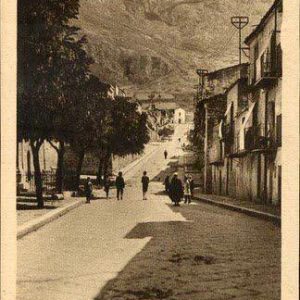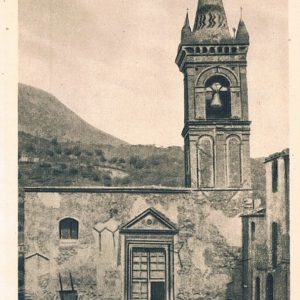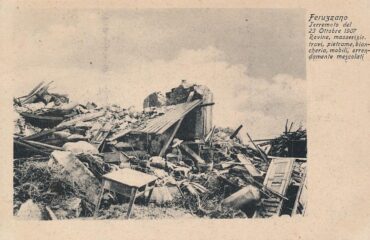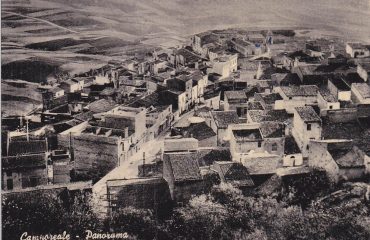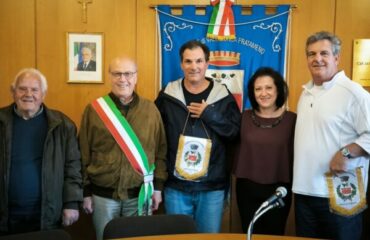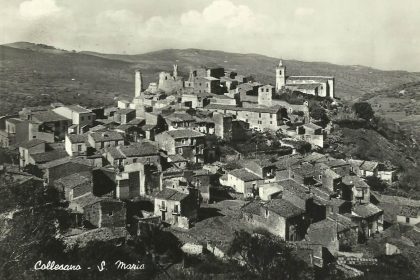
In this article we offer some brief notes on the foundation of Collesano and the list of surnames present in the 1747 census.
Collesano is a Sicilian town of 3854 inhabitants. It is part of the Metropolitan City of Palermo and is located in the Madonie area, on the slopes of Mount Grotta del Signore and a few kilometers from the sea.
From the Arab village to the Norman domination
Collesano boasts, in addition to a splendid geographical position, a more than millennial history. On the top of Monte d’Oro, a short distance from the current town, the ruins (houses and fortifications) of a town dating back to the Arab age emerge.
In 1154 the geographer Muhammad al-Idrisi in his “Book of Roger” mentioned this center with the Arabic name of Qal’at as-sirat (“Rock of the road” or “Rock of the straight path”), describing it as A fortress on a hill steep and elevated hill, it abounds in waters and has many arable lands owed by a high and supreme mountain. Once upon a time there was a very strong and highly defended castle, but the reduced King Roger had the castle demolished and transformed the inhabited area into the site where it is today.
With the destruction of the ancient center (which took place around 1130) and the transfer of its inhabitants to a place in the valley not far away, the history of the current town of Collesano begins which, built around a castle and enclosed within a wall it was granted, together with its vast territory, to Adelicia, grandaughter of King Roger I.
The name, with an uncertain etymology, is reported in medieval sources as “Golisano” or “Gulisano”. The foundation of the Basilian monastery of Santa Maria de Pratali Grecorum (later “del Pedale”) dates back to the Norman period, built not far from the new town.
The feudal domain
Throughout the Middle Ages Collesano was the feudal domain of various families (Cicala, Ventimiglia, Rosso, Moncada, Centelles) with count title until 1444, the year in which the county was donated to Pietro Cardona, a Catalan noble, together with the lands of Caronia, Petralia Soprana and Petralia Sottana and the fiefdom of Bilici, with civil and criminal jurisdiction.
During the Cardonas’ dominion, which lasted until the first half of the sixteenth century, the town began to expand beyond the old city walls and the new parish church was built to replace the old one, which has now become insufficient for the increased population.
Artale Cardona, the last male heir of his family, died childless in 1536. He was succeeded by his sister Antonia, wife of Antonio d ‘Aragona, Duke of Montalto. In 1584 her grandaughter Maria d’Aragona brought the county of Collesano as a dowry to Don Francesco Moncada, prince of Paternò, whose heirs held it until the first half of the eighteenth century, when it passed as a dowry to Giuseppe Federico Alvarez de Toledo, duke by Ferrandina.
In the seventeenth century one of the rooms of the castle was transformed into a theater. When Prince Luigi Moncada was in Collesano, the local “Accademia degli Offuscati” held conferences and sacred and profane performances there. Unfortunately, in 1693 an earthquake severely damaged the ancient castle, which from then on suffered an inexorable decline, until it reached its current state of ruin.
From the 15th to the 18th century the town continued to expand and various religious orders built their convents there, some still existing today. The town’s economy was based on agriculture and pastoralism, but there was no lack of craft activities, first of all the production of ceramics.
The surnames of Collesano in 1747
In 1747, 670 families were censused in Collesano, for a total of 2165 inhabitants. Here are their surnames:
Agnello, Aiello, Albanisi, Alfonzo, Allegra, Andreana, Aranna, Artesi, Asciutto, Aversano,
Badami, Baiardo, Barbera, Barberi, Barracato, Barreca, Battaglia, Bellomo, Bellotta, Bertolo, Bertuccelli, Bisesi, Bonforte, Bonforti, Bonomo, Borzilleri, Brocato, Bronti, Buglisi,
Calaciuri, Calcavecchio, Cammarata, Cancila, Cangemi, Cangialosi, Cannata, Cannici, Cannino, Cannizzaro, Caponetto, Capria, Carcavecchia, Carcione, Carrà, Carrubba, Caruso, Catalano, Catalfamo, Caucenti, Cavoli, Cellino, Cerami, Chianchiano, Chianchiato, Chiaramonte, Cimino, Cipolla, Cirami, Cirasia, Ciraulo, Ciresi, Cirrincione, Collesano, Conoscenti, Coppa Corami, Cordo, Cordone, Cordoni, Corsello, Cottone, Crisanti, Crisotto, Cristadoro, Cuccia, Culotta, Cultrara, Curcio,
D’Accardo, D’Adorno, D’Agostaro, D’Agostino, D’Aiello, Dajdone, D’Anatra, D’Anna, D’Antoni, Davì, Di Berardo, Di Bernardo, Di Carlo, Di Cesare, Di Cristina, Di Falco, Di Fatto, Di Figlia, Di Francesca, Di Franco, Di Ganci, Di Gangi, Di Gaudio, Di Gerardo, Di Giorgio, Di Giuseppe, Di Leonardo, Di Leone, Di Liberti, Di Lisi, Di Lorenzo, Di Luisi, Di Maggio, Di Maria, Di Martino, Di Miceli, Di Noto, Di Palermo, Di Paola, Di Paolo, Di Pasquale, Di Piazza, Di Simone, Di Termi, Dolci, D’Orlando,
Errante,
Fajlla, Fatta , Ferro, Fesi, Ficcaglia, Fico, Fiore, Fiorella, Fiorino, Furia,
Gajti, Gallo, Galofaro, Genco, Gerardo, Giajmo, Giambelluca, Giambrone, Giambruno, Gianforte, Giangrasso, Gianni, Giannì, Giannò, Gianvecchio, Giardina, Giglio, Gioja, Giordano, Gisiano, Grassia, Greco, Guarneri, Guercio, Guiti, Gulino, Gurrerra, Gusmano, Gussio, Guttilla, Guzzio,
Indulsi, Intarollo, Iocolano, Jacuzzo,
La Barbera, La Gioja, La Rizza, La Rocca, La Russa, La Spisa, La Tegera, Lanza, Lapi, Lazara, Lazzara, Li Pira, Li Volsi, Lo Bianco, Lo Cascio, Lo Cicero, Lo Curto, Lo Forte, Lo Forti, Lo Meli, Lo Sciutto, Lo Tusa, Lo Tuso, Lo Varchi, Lo Verde, Lucca,
Macaluso, Madaro, Maggio, Maggiore, Magliolo, Majmone, Manzio, Marchione, Mariano, Marisi, Marrone, Maurici, Mazzara, Micciancio, Migliaccio, Migliore, Miliano, Militello, Minneci, Mizzeffi, Mogavero, Moncaudo, Moriella, Morisi, Motta, Musca, Muscarella, Musciotto, Mutisi,
Nicchitta, Noce,
Oddo, Ortolano,
Pace, Pagliana, Palmeri, Pantano, Panzica, Passafiume, Patti, Paulotto, Pecorelli, Perdici, Peri, Perricone, Petralia, Pira, Piscitello, Pittito, Pizzillo, Pizzuto, Polinaro, Polito, Pongolia, Portuese, Prestarigo, Princivalli, Provenzano, Provinzano, Puleo, Puzzillo,
Quagliana,
Rametta, Randazzo, Remiggi, Restivo, Richiusa, Riella, Ristivo, Roggeri, Roggiero, Roggio, Romano, Rosso, Rotondo, Rotundo, Ruffino, Ruggeri, Runzula, Russo, Rustici,
Sala, Saletta, Santiglia, Santino, Santoro, Sapienza, Sarrica, Saullo, Scacciaferro, Scaluni, Scecchitano, Scelsi, Schichi, Schifano, Sciacchitano, Scialuchedda, Sciarrino, Scira, Scorsone, Siddeli, Silì, Simonella, Sorrentini, Spallini, Speranza, Speziale, Spinola, Starrabba, Stavano, Stira,
Tamburo, Temperato, Temprato, Termi, Termotto, Testajuti, Testajuto, Tomasello, Torregrossa, Torrisi, Tortoreti, Tortorici, Trajna, Triunfo, Trovato, Trupia, Tudisco, Tumminaro, Tumminello, Turrisi,
Vaccarella, Valenti, Valentino, Valenzia, Varca, Venturella, Venturi, Vergadoro, Viene, Villa, Virgadoro, Vizzì, Volo,
Zappulla, Zarcone, Zito.
If your family comes from Collesano and you want to start a genealogy research, CONTACT US!

 Italiano
Italiano 